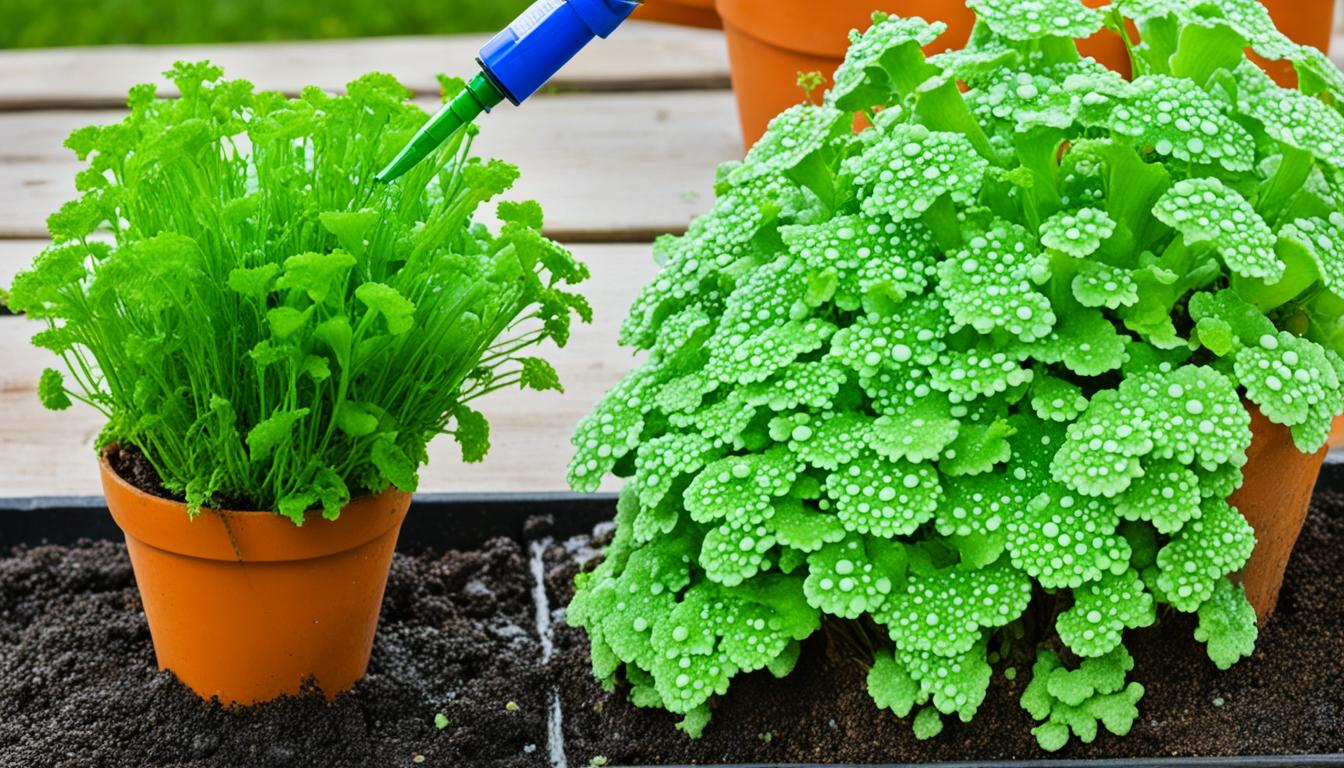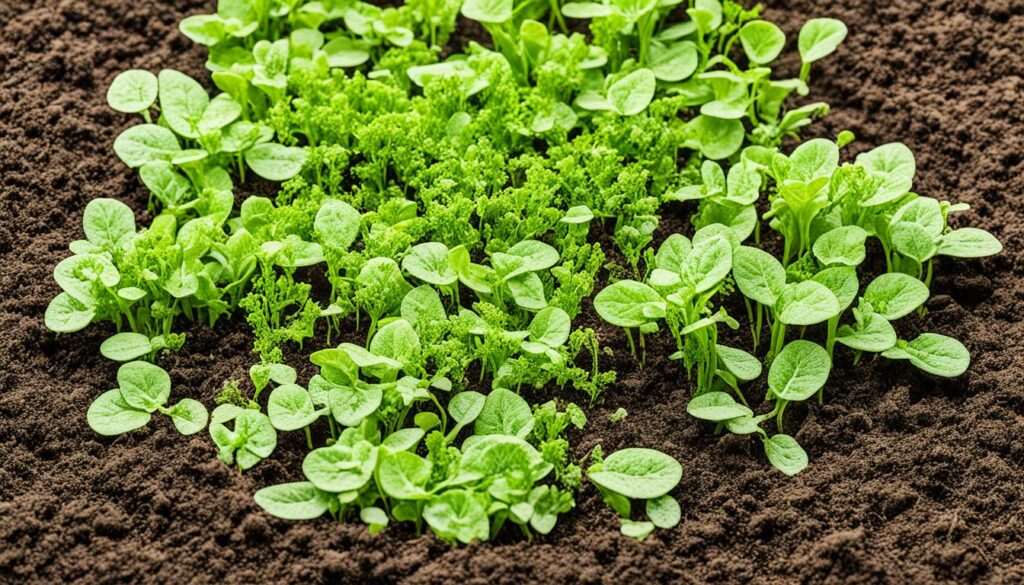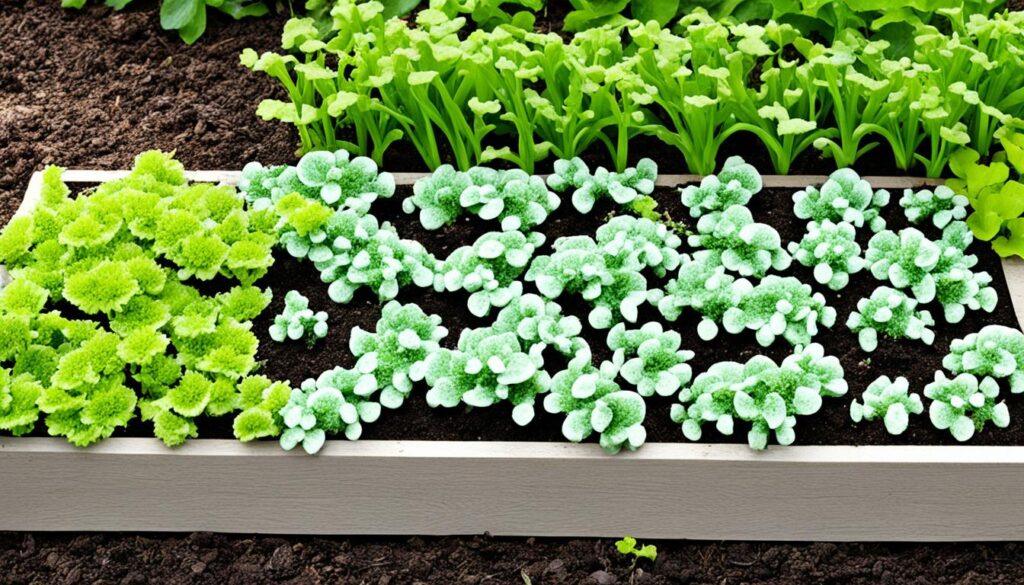
Eliminate Green Soil Fungus Effectively
Green soil fungus can be a persistent and troublesome issue for gardeners and homeowners alike. If left untreated, it can lead to poor plant health, decreased yield, and an unsightly appearance. In this article, we will explore various methods and treatments to help you effectively eliminate green soil fungus and restore the health and vitality of your soil.
Green soil fungus, also known as green mold, thrives in damp and humid conditions. It is commonly found in areas with poor drainage, excessive watering, or high levels of organic matter. Identifying the presence of green soil fungus is crucial for prompt treatment and prevention of further infestations.
To get rid of green soil fungus, there are several approaches you can take. Chemical treatments, natural remedies, and cultural practices all play a role in effective soil fungus removal. By understanding the nature of green soil fungus and implementing the proper treatment methods, you can restore a healthy environment for your plants to flourish.
Key Takeaways:
- Green soil fungus can be eliminated effectively with the right treatment methods.
- Early detection is crucial for preventing the spread of green soil fungus.
- Chemical treatments, natural remedies, and cultural practices all contribute to effective soil fungus removal.
- Maintaining proper soil conditions, such as good drainage and balanced moisture levels, can help prevent green soil fungus infestations.
- Regular monitoring and taking proactive measures can minimize the risk of green soil fungus reoccurring.
Understanding Green Soil Fungus
Green soil fungus can be a persistent problem for gardeners and homeowners alike. To effectively control and eliminate this fungus, it’s crucial to understand its characteristics and the factors that contribute to its growth.
Controlling green soil fungi requires early detection and prompt action. Recognizing the common symptoms of green soil fungus infestation is the first step in addressing the issue. Look out for:
- Visible green discoloration on the soil surface
- Powdery or slimy texture on the soil
- A musty or earthy odor
Once identified, it’s important to take immediate measures to prevent the spread of the fungus. Early detection can help save your plants from potential damage and ensure the overall health of your garden.
The Factors Contributing to Green Soil Fungus Growth
Green soil fungus thrives in environments with specific conditions. Understanding these factors can aid in implementing effective remedies.
Moisture: Excessive water or poor drainage can create a favorable environment for green soil fungus to flourish. Moist and humid conditions allow the fungus to grow rapidly, leading to its spread.
Organic Matter: Green soil fungus feeds on organic matter, such as decaying plant material. Accumulation of debris or the use of organic mulches can contribute to its growth. Proper maintenance and regular clearing of organic matter can help control its spread.
pH Level: Green soil fungus prefers neutral to slightly acidic soil conditions. Soil with a high pH level can be more susceptible to fungus infestation. Regular soil testing can help monitor and adjust the pH level to discourage fungal growth.
It is worth noting that green soil fungus can vary in severity and can be influenced by local environmental factors. Consulting with a professional or local gardening experts can provide valuable insights tailored to your specific region.
Importance of Early Detection and Remedies for Green Soil Fungus
Early detection and immediate action are crucial in combating green soil fungus. Leaving the fungus untreated can lead to widespread contamination, resulting in damage to plants and the overall health of the soil.
There are several remedies available for green soil fungus control:
- Improving Drainage: Ensuring proper soil drainage can prevent excessive moisture accumulation, creating an unfavorable environment for fungal growth.
- Reducing Organic Matter: Regular removal of decaying plant material and debris can help minimize the food source for green soil fungus.
- Applying Fungicides: In severe cases, the use of fungicides may be necessary. However, it is important to follow the instructions provided and consider the potential environmental impact.
- Encouraging Beneficial Microorganisms: Introducing beneficial microbes can help suppress the growth of green soil fungus and promote a healthy soil ecosystem.
By understanding the characteristics of green soil fungus and implementing appropriate remedies, you can effectively control its growth and preserve the health of your garden.
Prevention and Management of Green Soil Fungus
To minimize the risk of green soil fungus infestation, it is essential to implement preventive measures and effective management strategies. By maintaining healthy soil conditions and reducing moisture levels, you can create an environment that is less conducive to the growth of green soil fungus. Here are some practical tips to help you prevent and manage green soil fungus:
- Ensure proper drainage: Poor drainage can contribute to excessive moisture in the soil, creating an ideal environment for green soil fungus to thrive. Regularly check and maintain proper drainage systems in your garden or landscape.
- Maintain balanced soil pH: Green soil fungus tends to thrive in acidic soil conditions. Regularly test the pH level of your soil and make necessary amendments to maintain a balanced pH.
- Remove infected plants: If you notice any signs of green soil fungus on your plants, promptly remove and dispose of the infected plants to prevent further spread.
- Practice crop rotation: Rotating your crops annually can help disrupt the life cycle of green soil fungus and reduce the risk of its recurrence.
- Avoid overwatering: Excessive moisture can create an ideal breeding ground for green soil fungus. Water your plants adequately without overwatering them, and ensure proper soil moisture levels.
- Use proper mulching techniques: Mulching helps regulate soil temperature and moisture, which can deter the growth of green soil fungus. Use organic mulch materials and apply them properly around the base of your plants.
- Provide adequate air circulation: Proper air circulation is essential for maintaining a healthy soil environment and preventing the buildup of excess moisture. Avoid overcrowding plants and ensure sufficient spacing between them.

“By implementing these preventive measures and management strategies, you can effectively minimize the risk of green soil fungus infestation and maintain a healthy soil environment for your plants to thrive.”
Chemical Treatments for Green Soil Fungus
When it comes to combating green soil fungus, there are various chemical treatments available that can effectively target and eliminate the problem. These treatments, including fungicides and other chemical agents, are designed to tackle the root causes of green fungus and provide a fast and efficient solution.
While chemical treatments can be highly effective in eradicating green soil fungus, it is important to consider the pros and cons before choosing this method of treatment. Let’s take a closer look at the advantages and potential environmental impacts of using chemical treatments:
“Chemical treatments offer a potent solution for eliminating green soil fungus quickly and effectively.”
Pros of Chemical Treatments
- Highly effective in eliminating green soil fungus
- Fast results, providing immediate relief
- Targeted approach for effective eradication
- Convenient application methods available
Cons of Chemical Treatments
- Potential harm to beneficial soil organisms
- Possible negative impact on the environment
- Requires caution during application to avoid overuse
- May pose health risks if not used properly
While chemical treatments can be highly effective, it is essential to use them responsibly and with care. It is recommended to follow the instructions provided by the manufacturer and consider alternative treatment methods if the environmental impact is a concern.
Natural Remedies for Green Soil Fungus
When it comes to treating green soil fungus, natural remedies and organic methods can be highly effective. These solutions offer a safe and eco-friendly way to combat the problem without the use of harsh chemicals. In this section, we will explore several natural treatments that you can try in your garden to eliminate green soil fungus.
1. Beneficial Microbes
One natural solution for green soil fungus treatment is the use of beneficial microbes. These microscopic organisms help restore the balance of healthy soil by suppressing the growth of harmful fungi. Simply apply a high-quality microbial product to the affected areas to enhance the soil’s natural defense mechanisms against green fungus.
2. Neem Oil
Neem oil is another effective organic remedy for combating green soil fungus. It contains natural compounds that have antifungal properties, making it an excellent choice for treatment. Dilute neem oil according to the instructions and apply it to the affected soil. This will help control the fungal growth and prevent further infestation.
3. Compost Tea
Compost tea is a nutrient-rich liquid that is created by steeping compost in water. It is a natural and cost-effective solution for green soil fungus treatment. The beneficial microorganisms present in compost tea help suppress fungal growth and promote healthy soil conditions. Apply the compost tea directly to the affected areas for best results.
By utilizing these natural remedies, you can effectively treat green soil fungus while promoting a healthy and thriving garden environment. Remember to regularly monitor your plants and soil to catch any signs of fungal infestation early on. Prevention is always better than treatment when it comes to green soil fungus, so maintaining proper soil conditions and practicing good garden hygiene is key.

Stay tuned for the next section, where we will delve into cultural practices that can help control green soil fungus and maintain a fungus-free garden.
Cultural Practices for Green Soil Fungus Control
When it comes to keeping green soil fungus at bay, implementing cultural practices is crucial. These techniques focus on promoting healthy soil conditions that discourage the growth and spread of green soil fungi. By incorporating the following practices into your gardening routine, you can effectively control green soil fungi.
Proper Watering
One of the primary factors contributing to the growth of green soil fungus is excessive moisture. It is essential to water your plants properly and avoid overwatering, as this creates the ideal environment for fungal growth. Instead, adopt a targeted watering approach that provides adequate moisture to the root zone without saturating the soil.
Crop Rotation
Rotating crops is an effective way to prevent the buildup of green soil fungus spores. By alternating the types of plants in your garden each season, you disrupt the life cycle of the fungi, reducing the risk of infestation. Additionally, crop rotation helps maintain soil health and nutrient balance, contributing to overall plant vigor.
Mulching
Mulching not only helps conserve moisture and suppress weed growth but also plays a vital role in controlling green soil fungus. Apply a layer of organic mulch around your plants to inhibit the spread of fungal spores. Mulch acts as a physical barrier, preventing spores from reaching the soil surface and establishing a foothold.
Soil Sterilization
In cases where green soil fungus infestation is severe, soil sterilization can be an effective control measure. This process involves heating the soil to a temperature that kills the fungi and other pathogens, minimizing their presence. Soil sterilization can be achieved through solarization using transparent plastic sheets or through steam sterilization methods.
Implementing these cultural practices not only helps control green soil fungi but also contributes to overall soil health and plant vitality. By adopting proper watering techniques, practicing crop rotation, mulching, and soil sterilization, you can create an unfavorable environment for green soil fungus growth.
| Cultural Practices | Effectiveness | Key Benefits |
|---|---|---|
| Proper Watering | High | – Prevents excessive moisture – Discourages fungal growth |
| Crop Rotation | Moderate | – Breaks fungal life cycle – Maintains soil health |
| Mulching | Moderate | – Acts as a physical barrier – Inhibits spore spread |
| Soil Sterilization | High | – Kills fungi and pathogens – Reduces infestation severity |
By incorporating these cultural practices into your gardening routine, you can effectively control green soil fungi and maintain a healthy, vibrant garden. Remember to adapt these practices based on the specific needs of your plants and the local environmental conditions.
Conclusion
In conclusion, eliminating green soil fungus requires a proactive approach that involves early detection, prevention, and effective treatment methods. By addressing the underlying causes of green soil fungus growth and implementing proper management practices, you can protect your plants and maintain a healthy soil environment.
Early detection is key to preventing the spread of green soil fungus. Regularly inspect your plants for signs such as greenish mold, wilting leaves, and stunted growth. Promptly remove and dispose of any infected plant material to prevent further contamination.
Prevention plays a crucial role in avoiding the occurrence of green soil fungus. Maintain proper soil drainage, avoid overwatering, and practice good sanitation in your garden. Implementing cultural practices such as crop rotation, mulching, and proper watering techniques can also help minimize the risk of fungus infestation.
When it comes to treatment, both chemical and natural remedies are available. Chemical treatments such as fungicides can be effective, but they should be used with caution to minimize environmental impact. Alternatively, natural remedies like beneficial microbes, neem oil, and compost tea provide safe and eco-friendly options for addressing green soil fungus.
To ensure the best possible outcome, it is recommended to consult with professionals such as Fix Mold Miami for mold assessment and guidance on green soil fungus treatment. With their expertise, you can receive expert advice tailored to your specific situation.




